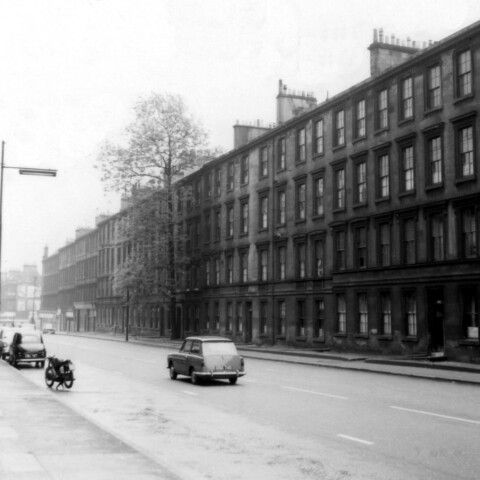 Corben Simpson – The Corben Simpson Collection (Frenzy, compact disc)
Corben Simpson – The Corben Simpson Collection (Frenzy, compact disc)
Corben Simpson – 3 (Frenzy, vinyl)
He won a Silver Scroll award in 1971. He sang for Blerta. He recorded an album in bed. After more than 50 years Corben Simpson is finally on CD and fresh vinyl. GARY STEEL takes a listen.
 When I set out to write a story on Corben Simpson in 1996 I quickly filled up cassette tapes of reminiscences from his former bandmates, former collaborators and former friends, all of whom had startling, and troubling, stories to tell about the singer-songwriter. Most of them painted a picture of a deeply flawed individual whose childlike perspective and capacity to indulge in various substances had ruined his career, despite having had two extraordinary gifts: the ability to write wonderful songs and to sing them with a voice that was unforgettable.
When I set out to write a story on Corben Simpson in 1996 I quickly filled up cassette tapes of reminiscences from his former bandmates, former collaborators and former friends, all of whom had startling, and troubling, stories to tell about the singer-songwriter. Most of them painted a picture of a deeply flawed individual whose childlike perspective and capacity to indulge in various substances had ruined his career, despite having had two extraordinary gifts: the ability to write wonderful songs and to sing them with a voice that was unforgettable.
Eventually, I tracked this all-but-forgotten figure down to a workman’s hut in an abandoned industrial complex just off the Northwestern motorway in Te Atatu, Auckland, and found him to be in a sorry state. (See that story here). How had the young man who had won a Silver Scroll in 1971 for his beautiful song, ‘Have You Seen A Man Cry?’ and had gone on to voice that incredible Blerta song adaptation of a Margaret Mahy story, ‘Dance Around The World’, ended up like this?
I was heartbroken. He’d been one of my teenage idols. An amazing 1972 Blerta concert at Hamilton’s Peachgrove Intermediate had completely won me over. He’d then shocked conservative New Zealand by appearing nude at the Great Ngaruawahia Music Festival in 1973, released his unique and highly eccentric Get Up With The Sun album on the cool underground Harvest label the same year, and in 1975, I’d caught him performing an insane (and insanely great) warm-up to former Monkee Mike Nesmith’s concert at Hamilton’s Founders Theatre. I knew he was out there, but all my rock heroes were. I always imagined that he would go on to even greater things. If he’d been part of the rock’n’roll machinery in the UK or USA, he’d have been looked after by heavyweight management, but down here in New Zealand, there was no safety barrier or protection or money for someone as idiosyncratic as Corben.
I’ve often thought of him as our own Syd Barrett, and there are certain similarities. But musically, the two are vastly different. As two new releases show, one a vinyl artefact and the other a 19-song collection of rarities, Corben Simpson straddled two different worlds. In one of these, he’s a MOR troubadour covering songs by Van Morrison (three, in fact!), Goffin/King and Stevie Wonder. In the other, he’s an acid-drenched eccentric fucking around in the studio or onstage (just because he could) and sometimes brilliantly.
If Corben had his time again as a young man in the 21st century and eschewed the cover versions (because these days, you can) he’d have built an ardent underground fandom, but times were different here in the 1970s. Few appreciated an individual who was as unpredictable as his or a talent that was clearly soaked in something stronger than grog (although grog was his drug of choice by the time I met Corben in the ‘90s).
That Metro story on Corben was hard to write. I had a naïve idea that it might somehow make people aware of him again and provoke a resurgence of interest. That didn’t happen. A few months afterwards I bumped into Corben in Ponsonby Rd. He looked like a beggar, and he was desperate for money. I bought some Sonny Day records from him because he clearly needed the money and he said that he appreciated my piece, though years later his daughter Kimberly (the one he sang a touching lullaby to on Get Up With The Sun) wrote that he hated it.
His life would continue to plummet for some years after that, but we won’t go into that here. Happily, by the time my dear friend Steve Braunias profiled him for the New Zealand Herald’s Canvas magazine in 2021, he’d made something of a resurgence by performing on the 2019 Silver Scrolls and was clearly enjoying living a new life in Tauranga.
 The problem was that – like so many of our heritage artists – you couldn’t find or buy a recording by Corben Simpson, and sadly, without the evidence you cease to exist in the mind of the public. (Look at someone like the late English singer-songwriter Nick Drake, who was terribly obscure until his 1970s albums were finally reissued, and was suddenly very hip earlier this century when one of his beautiful songs was used in an ad. Pity he wasn’t around to get the financial benefit.)
The problem was that – like so many of our heritage artists – you couldn’t find or buy a recording by Corben Simpson, and sadly, without the evidence you cease to exist in the mind of the public. (Look at someone like the late English singer-songwriter Nick Drake, who was terribly obscure until his 1970s albums were finally reissued, and was suddenly very hip earlier this century when one of his beautiful songs was used in an ad. Pity he wasn’t around to get the financial benefit.)
NZ music archivist and Frenzy label owner Grant Gillanders set out to rectify that appalling state of affairs by releasing two discs, The Corben Simpson Collection (a compact disc) and a previously unreleased album called 3 (vinyl only). The CD compiles 19 songs, seemingly chronological, spanning the ‘Have You Heard A Man Cry?’ single and ‘Kimberly (Song For Baby)’, which appeared on Get Up With The Sun. In between we find a selection of songs from recordings made by Corben’s former bandmate Ed Morris for his Strange record label, and for good measure, tacked onto the end is a slightly reggaefied 1985 re-take on ‘Have You Heard A Man Cry?’
 Anyone expecting a wealth of original songs might be disappointed, as only seven of the 19 songs are originals. This might prove perplexing to many listeners, given Corben’s obvious songwriting gift, but it’s worth pausing for a minute to remember that in the first half of the 1970s, it was rare for NZ artists to get the opportunity to record their own tunes. It was a time when the so-called cultural cringe was at its peak, and our top bands were expected to be dab hands at churning out cover versions of popular overseas hits. It’s hard to get your head around and the phenomenon is worthy of its own investigation, but there are several probable reasons for the preponderance of covers. One is that in the ‘60s, it was typical for Kiwi artists to record their own versions of overseas hits and have them out here before their international counterparts arrived via surface mail. As a consequence of this, in the early ‘70s, there seems to have been a profound lack of confidence in our own songwriters’ ability to appease the public unless they were aping overseas hits, and it wasn’t until the early ‘80s with the arrival of independent labels and a new wave of original acts with original songs that we really got our mojo back. The beginning of that was obviously groups like Split Enz and Hello Sailor in the mid-to-late ‘70s who had the temerity to refuse to do cover versions and stand up for their artistry over entire albums.
Anyone expecting a wealth of original songs might be disappointed, as only seven of the 19 songs are originals. This might prove perplexing to many listeners, given Corben’s obvious songwriting gift, but it’s worth pausing for a minute to remember that in the first half of the 1970s, it was rare for NZ artists to get the opportunity to record their own tunes. It was a time when the so-called cultural cringe was at its peak, and our top bands were expected to be dab hands at churning out cover versions of popular overseas hits. It’s hard to get your head around and the phenomenon is worthy of its own investigation, but there are several probable reasons for the preponderance of covers. One is that in the ‘60s, it was typical for Kiwi artists to record their own versions of overseas hits and have them out here before their international counterparts arrived via surface mail. As a consequence of this, in the early ‘70s, there seems to have been a profound lack of confidence in our own songwriters’ ability to appease the public unless they were aping overseas hits, and it wasn’t until the early ‘80s with the arrival of independent labels and a new wave of original acts with original songs that we really got our mojo back. The beginning of that was obviously groups like Split Enz and Hello Sailor in the mid-to-late ‘70s who had the temerity to refuse to do cover versions and stand up for their artistry over entire albums.
But back in Corben Simpson’s time, record companies just didn’t have the confidence in local artists being able to move units with whole albums of original material, and it seems he was a victim of that. But another perspective is that Corben was originally known for his incredible live renditions of famous songs, and it’s possible that he really loved doing his own interpretations of them. He was a natural performer and an incredible singer, and his vocal facility is what makes The Corben Simpson Collection worth hearing.
 New Zealand has produced a number of distinctive and excellent vocalists in the pop arena, perhaps most notably the likes of Tim Finn and Dave Dobbyn, but Corben Simpson’s singing is something else again. The way he swoops from tenor to countertenor seemingly without a break is quite extraordinary and reminds me in some ways of Tim Buckley without the obvious acrobatics. His voice is clear as a bell and can be piercing, but in a good way. Like Buckley and Robert Plant, Corben can sound tender but quickly ramp things up to maximum intensity, which is perhaps a reflection of his unstable personality but means that when he sings it sounds like he means it.
New Zealand has produced a number of distinctive and excellent vocalists in the pop arena, perhaps most notably the likes of Tim Finn and Dave Dobbyn, but Corben Simpson’s singing is something else again. The way he swoops from tenor to countertenor seemingly without a break is quite extraordinary and reminds me in some ways of Tim Buckley without the obvious acrobatics. His voice is clear as a bell and can be piercing, but in a good way. Like Buckley and Robert Plant, Corben can sound tender but quickly ramp things up to maximum intensity, which is perhaps a reflection of his unstable personality but means that when he sings it sounds like he means it.
Having said that, having three Van Morrison covers on one compilation is just a step too far, and even Corben can’t improve (or even approach) Van’s definitive reading of ‘Moondance’.
Sometimes, however, Corben really pulls out all the stops and turns in an interpretation that’s quite special. This is the case with what on the face of it seems like an especially silly song choice: ‘In The Summertime’, which was a bouncy novelty hit for Mungo Jerry. Corben’s version is almost unrecognizable and he sings beautifully over a slinky groove. His version of Goffin/King’s ‘Up On The Roof’ (originally a hit for The Drifters) is fabulous, and as unlikely as it seems, he wraps his voice around Rod McKuen’s drippy ‘Jean’ with real sensitivity. Corben seems to have a special affinity with the songs of Danny Kortchmar (mostly known for his work with the likes of James Taylor and other LA singer/songwriters) and his versions of ‘The Sky Is Falling’ and ‘Sailing’ are splendid.
 As for the original songs, ‘Have You Heard A Man Cry?’ has stood the test of time, and it’s an appealingly sensitive ballad that appeared at a very macho time in history. (After all, The Cure’s ‘Boys Don’t Cry’ didn’t appear for another eight years). Blerta’s ‘Dance Around The World’ appears in demo form and lacks the embellishments of the eventual hit single, but key elements like the narration (is it Bill Stalker, like the released version?) are already in place.
As for the original songs, ‘Have You Heard A Man Cry?’ has stood the test of time, and it’s an appealingly sensitive ballad that appeared at a very macho time in history. (After all, The Cure’s ‘Boys Don’t Cry’ didn’t appear for another eight years). Blerta’s ‘Dance Around The World’ appears in demo form and lacks the embellishments of the eventual hit single, but key elements like the narration (is it Bill Stalker, like the released version?) are already in place.
The most delightful surprise for me is ‘Mystery Lady’, a song I’m well acquainted with but that I had no idea was a Corben Simpson composition. As a longtime fan of Wellington jazz-rock group Quincy Conserve, since 1973 or so I’ve owned an album called Epitaph which includes a great version of this lovely song. It’s bizarre after all this time to hear Corben’s own version.
The other highlights are ‘Running To The Sea’ and ‘Kimberly (Song For Baby)’, both of which appeared on Get Up With The Sun. ‘Running To The Sea’ is an ebullient hippy anthem, a utopian vision of flying wild and free that’s a genuine earworm, while ‘Kimberly (Song For Baby)’ is a tender lullaby to his daughter with nonsense words that I remember singing to my kids when I was rocking them to sleep.
 Get Up With The Sun, with its memorable “magic mushroom” cover, has never made it to CD or reissued LP but is available through the streaming services. It’s well worth hearing and gives some idea of the lysergic fragmentation Corben was experiencing at the time. It’s deeply flawed and really only half a great album, but the more out-there songs give listeners a more nuanced perspective than the more conventional material on The Corben Simpson Collection. Ultimately, both are required listening.
Get Up With The Sun, with its memorable “magic mushroom” cover, has never made it to CD or reissued LP but is available through the streaming services. It’s well worth hearing and gives some idea of the lysergic fragmentation Corben was experiencing at the time. It’s deeply flawed and really only half a great album, but the more out-there songs give listeners a more nuanced perspective than the more conventional material on The Corben Simpson Collection. Ultimately, both are required listening.
Also available is a vinyl album simply called 3, which contains eight songs, four of which, including ‘Have You Seen A Man Cry?’ and the demo of ‘Dance Around The World’ is shared with the CD. Disappointingly, the first song ‘Dawn (Opening)’ is really just a bit of jazzy noodling, while the last, ‘Dawn (Closing)’ seems to be simply the same thing backwards. This leaves only ‘Where Is Love?’ and ‘Germs’, both of which sound like outtakes from Get Up With The Sun, as they’re quite unhinged. “Germs, driving in their cars, germs, trying to get to Mars”, he sings on the latter.
I’m thrilled that Corben Simpson’s music is finally available on CD and fresh vinyl, and I’m cautiously optimistic that these releases will lead to a resurgence of interest and perhaps a reassessment of his worth to our popular (or unpopular) music history. It’s a great pity, then, that more attention to detail hasn’t been paid to the finished package. While the design of the CD is fun, the kind of information that collectors want (recording dates and places, lineups, etc) are strangely absent. Although there are copious notes there’s very little to give context or explanation around the recordings contained herein, and that’s especially true of the vinyl album. Why is it called 3, and why were those songs chosen? Was it simply planned as a meltdown composite of the CD? But if so, why are several of the tracks not on the CD? Interestingly, there is a musician lineup listed on the LP, which is otherwise shorn of any liners. It’s a terrible shame that ‘Have You Heard A Man Cry?’ sounds so poor. If the original tapes are missing, doesn’t someone have a pristine single? It sounds warmer on the vinyl, but his vocals are noticeably distorted through wear and tear. My final complaint is about the frankly appalling number of grammatical and punctuation errors… errors which could have so easily been corrected by a competent proofreader. Getting it right is important.

Perhaps one day, someone will gather all of Corben Simpson’s originals on one disc and the best of his covers on another – and perhaps a third collecting the work he did with other bands and collaborators – and write liner notes that give the factual specifics about each track together with insightful contextual information.
In the meantime, lend your ear to these. Rogue talents don’t come much more startling than this.














